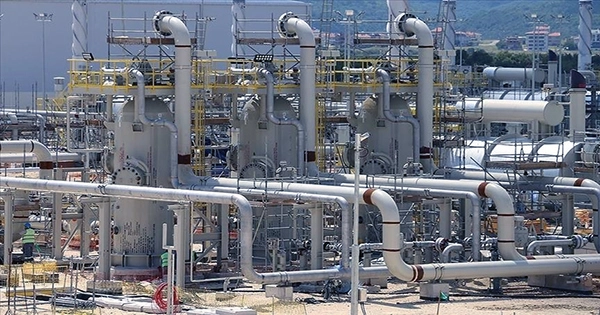Seismologists have also noticed strange activity taking place on the same day as allegations of a significant leak close to Nord Stream, the two vital pipelines that connect natural gas from Russia to Europe.
Environmentalists have cautioned that this leak might have significant effects on the ecosystem and climate, even outside of the geopolitical repercussions.
According to the Danish energy authority, a total of three leaks have been found on the Nord Stream 1 and Nord Stream 2 gas pipes close to the Danish island of Bornholm. The Swedish Maritime Administration issued similar cautions, advising ships to keep at least 9 kilometers (5 nautical miles) away from the locations.
Along with this, a seismograph in Bornholm noted an increase in ground tremors on Monday, the day the pipelines experienced sharp drops in pressure, according to Reuters. We cannot confirm whether it could be gas gushing out, a representative informed the news organization.
Nobody is really certain of the cause of the leaks at this time. Numerous agencies in Europe have stated that they have not ruled out Russian sabotage, citing the rarity of three simultaneous releases.
According to the official news agency TASS, Russia is “very concerned” about the current state of affairs. The pressure in the gas pipeline has drastically decreased, according to Kremlin spokesman Dmitry Peskov, and they are unable to rule out sabotage as a possible explanation just yet.
All of this occurs while Europe experiences a worsening energy crisis. In retaliation for their invasion of Ukraine, Europe accused Russia of weaponizing energy supplies; however, Moscow accuses the West of imposing sanctions that have caused supply interruptions.
Who can blame them for focusing on the political ramifications of this, it will also have a big impact on the environment.
The Nord Stream pipes are leaking natural gas, which is mostly composed of methane, a powerful greenhouse gas that traps heat in the atmosphere more than 25 times more effectively than carbon dioxide.
A large portion of this methane will rise to the ocean’s surface and enter the atmosphere, where it will advance the planet’s climate change. However, regardless of the leak, this gas would have burned like fossil fuel, producing pollutants.
Additionally, it may have an immediate effect on the marine life in the Baltic Sea. A gas leak in the water can harm the ecology in a manner similar to an oil disaster. Natural gas will disintegrate into the water in substantial amounts, which might make the water poisonous to fish, shellfish, and other marine life.
“If a leak occurs in the Nordstream pipeline, the gas rises directly to the water’s surface, therefore the impacts are likely to be limited to the immediate area. But there, the creatures put people in danger of suffocation. This is especially true for species that can’t flee rapidly, according to a statement from Nadja Ziebarth, a marine preservation expert with Friends of the Earth Germany (BUND).
“Of course, the most immediate effect is the loss of a precious resource and the simultaneous release of greenhouse gases,” continued Ziebarth.
Pure methane is non-toxic in seawater, however natural gas content varies depending on the deposit. Because it is unclear precisely which mixture is delivered in Nordstream, other gases may locally harm the marine habitat in ways that are unknown.
















